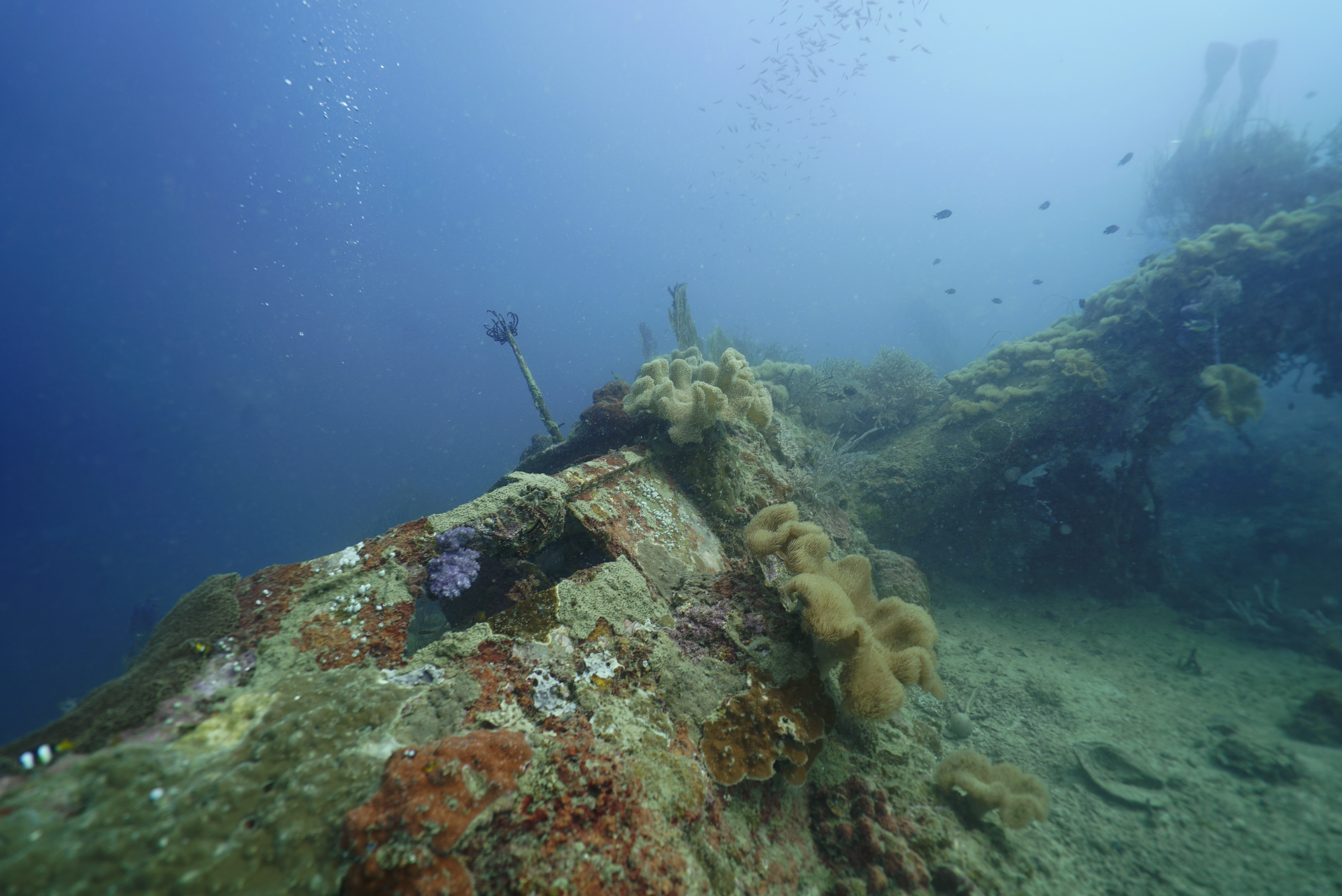
May 23, 2017 – Two B-25 bombers associated with American servicemen missing in action from World War II were recently documented in the waters off Papua New Guinea by Project Recover—a collaborative team of marine scientists, archaeologists, and volunteers who have combined efforts to locate aircraft and associated MIAs from World War II.
The B-25 bomber is one of the most iconic airplanes of World War II, with nearly 10,000 of the famous warbirds conducting a variety of missions—from bombing to photo reconnaissance, to submarine patrols and the historic raid over Tokyo. Present-day Papua New Guinea was the site of military action in the Pacific from January of 1942 to the end of the war in August 1945, with significant losses of aircraft and servicemen, some of whom have never been found.
In February, a Project Recover team set out on a mission to map the seafloor in search of missing WWII aircraft; conduct an official archaeological survey of a known B-25 underwater wreck; and interview elders in villages in the immediate area.
In its search of nearly 10 square kilometers, Project Recover located the debris field of a B-25 bomber that had been missing for over 70 years, associated with a crew of six MIAs.
“People have this mental image of an airplane resting intact on the sea floor, but the reality is that most planes were often already damaged before crashing, or broke up upon impact. And, after soaking in the sea for decades, they are often unrecognizable to the untrained eye, often covered in corals and other sea-life,” said Katy O’Connell, Project Recover’s Executive Director, who is based at the University of Delaware’s College of Earth, Ocean, and Environment. “Our use of advanced technologies, which led to the discovery of the B-25, enables us to accelerate and enhance the discovery and eventual recovery of our missing servicemen.”
Project Recover blends historical and archival data from multiple sources to narrow underwater search regions, then surveys the areas with scanning sonars, high definition imagers, advanced diving, and unmanned aerial and underwater robotic technologies.
“The latest discovery is a result of the dedication and fervent efforts of everyone associated with Project Recover,” said Dan Friedkin, chairman, and CEO of The Friedkin Group and a member of the Project Recover team who provides private funding for the organization. “We are encouraged at the progress that is being made as our search efforts expand and remain committed to locating the resting places of all U.S. servicemen missing since World War II.”
In addition to searching for missing aircraft, Project Recover also conducts archaeological surveys of sites that are known, but not yet documented, like the site of a B-25 bomber that was discovered in Madang Harbor, Papua New Guinea.
“While well known to locals and scuba enthusiasts for over 30 years, this particular B-25 had never been officially surveyed,” said Andrew Pietruszka, a staff scientist with Scripps Institution of Oceanography at the University of California San Diego, and Project Recover’s underwater archaeologist. Of the six crew associated with the aircraft, five survived the crash but were taken prisoner by the Japanese. The remaining crewmember went down with the plane and is still listed as missing.
“Our team of divers and scientists conducts site surveys to fully document the wreckage. That documentation can then be used by the U.S. government to correlate soldiers still missing in action with the aircraft site we discovered, and to evaluate that site for the possible recovery of remains,” explained Pietruszka.
While the scientific focus of Project Recover is to conduct underwater searches and surveys, equally important are the historical accounts of crashes that are often part of local histories, passed from one generation to another. While speaking to village elders about the two B-25 cases, Project Recover team members were told about local, terrestrial burial sites and an additional aircraft that had crashed on land.
Project Recover provides detailed information about its missions and any discovered wrecks and possible links to airmen listed as missing in action to the Department of Defense’s Defense POW/MIA Accounting Agency (DPAA). DPAA is tasked with recovery and repatriation efforts, including notification of the families of these MIAs.
“Any find in the field is treated with the utmost care, respect, and solemnity,” said O’Connell. “There are still over 73,000 U.S. service members unaccounted for from World War II, leaving families with unanswered questions about their loved ones. We hope that our global efforts can help to bring closure and honor the service of the fallen.”
The mission to Papua New Guinea kicked off Project Recover’s second year of formal operations and was made possible by a substantial financial commitment from Friedkin in 2016. Friedkin’s continued support is helping sustain ongoing missions while enabling the organization to innovate its technology and broaden its search and discovery efforts to focus areas around the world.
In 2016, team members expanded operations, conducting missions in England, New Caledonia, Palau, Saipan, the Solomon Islands, Tinian, and the U.S. in search of over 20 aircraft and 100 service members still missing in action. Five aircraft were successfully identified and documented, with documentation submitted to DPAA. The missions also resulted in new leads, based on field research and personal accounts from locals, which will aid in planning for future missions.
Among other missions around the world, Project Recover plans to return to Papua New Guinea later this year to focus on other cases of interest and further explore leads that developed from the February 2017 mission.
About Project Recover
Project Recover is a public-private partnership to enlist 21st-century science and technology combined with in-depth archival and historical research in a quest to find the final underwater resting places of Americans missing in action since World War II.
Established in 2012 with initial support from the Office of Naval Research and formalized in 2016 with private funding, Project Recover is a partnership among researchers at the University of Delaware’s College of Earth, Ocean, and Environment, Scripps Institution of Oceanography at the University of California San Diego, and The BentProp Project, Limited.
About Dan Friedkin
Dan Friedkin is chairman and CEO of The Friedkin Group, a consortium of automotive, hospitality, entertainment, golf and adventure companies. These organizations include: Gulf States Toyota, GSFSGroup, GS Marketing, US AutoLogistics, Ascent Automotive Group, Auberge Resorts Collection, Imperative Entertainment, Diamond Creek Golf Club, Congaree and Legendary Adventures.
Dan is active in U.S. and global wildlife conservation initiatives as well as various philanthropic initiatives in both aviation and education. He is chairman of the Texas Parks and Wildlife Commission, chairman of the Friedkin Conservation Fund, a trustee of the Wildlife Conservation Society, chairman of the Congaree Foundation, chairman of the Air Force Heritage Flight Foundation and an active pilot in Heritage Flight airshows, team member of Project Recover and serves on the advisory board of The Caesar Kleberg Wildlife Research Institute.
Related Posts:
- June 2017 – WWII B-25 Bombers located by Project Recover one of Top 10 Archaeological Discoveries of 2017
- March 2014 – PMAN XVI – Project Recover Locates F6F Hellcat and TBM Avenger in Palau
- March 2015 – PMAN XVII – Project Recover Locates Avenger In Palau
- March 2016 – PMAN XVIII – Project Recover Locates WWII TBM Avenger Aircraft
- The partial wing of a B-25 discovered and documented by Project Recover in Papua New Guinea.
- The underwater wreckage of a B-25 found and documented by Project Recover in Papua New Guinea.
- The wreckage of a newly found B-25 in the waters of Papua New Guinea
- The wreckage of a B-25 bomber documented by Project Recover in the waters of Papua New Guinea.
- The nearly intact underwater wreck of a B-25 bomber in the waters of Papua New Guinea, documented by Project Recover.
- A World War II era B-25 Bomber, documented by Project Recover, rests on the sea floor in the waters of Papua New Guinea.
- A World War II era B-25 Bomber, documented by Project Recover, rests on the sea floor in the waters of Papua New Guinea.
- The turret guns of a World War II era B-25 Bomber, documented by Project Recover, rests on the sea floor in the waters of Papua New Guinea.
- A World War II era B-25 Bomber, documented by Project Recover, rests on the sea floor in the waters of Papua New Guinea.
- The interior of a World War II era B-25 Bomber, documented by Project Recover, rests on the sea floor in the waters of Papua New Guinea.
- Project Recover team members conduct a flag ceremony to honor missing service members still associated with a downed B-25 off the coast of Papua New Guinea.
- Project Recover meets with local Papua New Guinea elders.
- Project Recover talking to locals in Papua New Guinea.


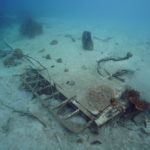
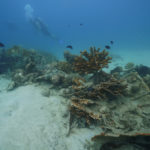
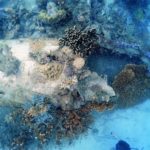
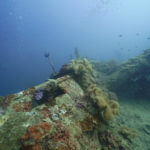
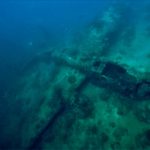
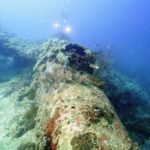
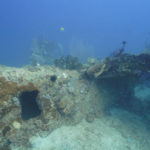
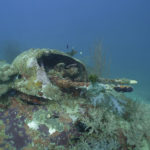
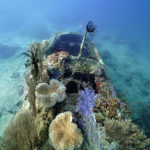
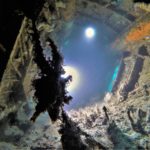
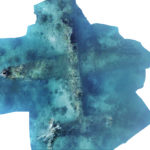

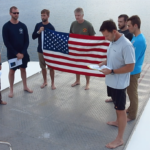
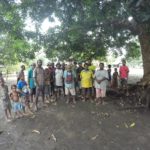
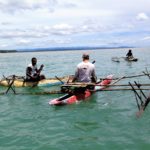

I know of a place where Japanese must have hidden weapons or possibly treasures.
I believe this may be my uncles aircraft Russell N. Erum (pilot)
/////////////////////////////////
Hi, my name is Edward Lenberg, I am an Airbus A321 captain and have been looking for my uncles missing B-25.
In regards to the B-25 bomber found in Madang Harbor, Papua New Guinea:
His AC was on a heading of 300 degrees from the Airfield and if he continued to fly over the mountains on a heading of 300 to Madang Harbor that would be a heading of 300 from the search triangle search zone of (“Lae to Finchafen to Salamaua”)to Madang Harbor to ditch the AC versus crashing in the jungle it would make perfect sense if they had sever mechanical problems as that is what I would do possibly.
B-25D-10 “The Ringmaster” Serial Number 41-30259
Pilot 2nd Lt. Russell N. Erum, O-796800 (MIA / KIA) Minneapolis, MN
Co-Pilot 2nd Lt. Mack L Sims, Jr., O-735828 (MIA / KIA) Hedker, TX
Radio T/Sgt Raymond O. Blair, 39317307 (MIA / KIA) Independence, OR
Gunner S/Sgt Robert J. Edwards, 39106055 (MIA / KIA) Phoenix, AZ
Crashed March 26, 1944
MACR 4496
Is it possible that I could get the Latitude and Longitude coordinates of the wreckage? Have you Identified any part of the Serial Number or dog tags of any of this crew?
////////////////////////////////////////////////
Here is the “report” and website link:
https://www.pacificwrecks.com/aircraft/b-25/41-30259.html
Pacific Wrecks
Missing In Action (MIA) Prisoners Of War (POW) Unexploded Ordnance (UXO)
Chronology Locations Aircraft Ships Submit Info
B-25D-10 “The Ringmaster” Serial Number 41-30259
USAAF
5th AF
345th BG
499th BS
Former Assignments
22nd BG
2nd BS
Pilot 2nd Lt. Russell N. Erum, O-796800 (MIA / KIA) Minneapolis, MN
Co-Pilot 2nd Lt. Mack L Sims, Jr., O-735828 (MIA / KIA) Hedker, TX
Radio T/Sgt Raymond O. Blair, 39317307 (MIA / KIA) Independence, OR
Gunner S/Sgt Robert J. Edwards, 39106055 (MIA / KIA) Phoenix, AZ
Crashed March 26, 1944
MACR 4496
Aircraft History
Built by North American. Delivered to the U. S. Army. Ferried overseas via Hawaii to Australia.
Wartime History
Assigned to the 5th Air Force. During June 1943 assigned to the 22nd Bombardment Group, 2nd Bombardment Squadron. Nicknamed “The Ringmaster” with circus nose, plane #1. Regular pilot Barrett and Brittain. First combat mission was on October 14, 1943. Flew at least 46 combat missions over New Guinea. Converted to a strafer variant (B-25D-1) by the 4th Air Depot at Garbutt Field near Townsville.
On January 31, 1944 assigned to the 345th Bombardment Group, 499th Bombardment Squadron on January 31, 1944. Crew chief was Mottern. When lost, engines R-2600-13 serial numbers 42-77606 and 41-27771. Weapon serial numbers noted in Missing Air Crew Report (MACR) 4496.
Mission History
On March 26, 1944 took off from Nadzab Airfield No. 3 at 3:50pm on a local transition flight that would return to the same airfield. “This B-25 was last seen after take off flying at 1,000′ heading of roughly 300 degrees.” The weather was visibility unlimited and 5,000′ to 6,000′ ceilings in the Markham Valley area. This aircraft was believed to have crashed in the mountains to the north-east near Nadzab.
Search
After failing to arrive at 6pm, it was too dark to conduct a search mission for the 30279missing plane. The next morning, a search by three B-25s took off at 9am and searched the Markham Valley area and bordering mountains and coastline from “Lae to Finchafen to Salamaua”. The planes returned at 11:30am with nil sighting. A second search was flown at 2pm concentrating on the area near the airfield, but returned at 4:30 with nil sighting.
Memorials
The entire crew was officially declared dead the day of the mission. All area memorialized on the tablets of the missing at Manila American Cemetery.
References
Missing Air Crew Report 4496 (MACR 4496)
American Battle Monuments Commission (ABMC) – Russell N. Erum
American Battle Monuments Commission (ABMC) – Mack L. Sims Jr.
American Battle Monuments Commission (ABMC) – Raymond D. Blair
American Battle Monuments Commission (ABMC) – Robert J. Edwards
FindAGrave – 1Lt “Russell N Erum” (photo, tablets of the missing photo)
FindAGrave – Mack L Sims, Jr (grave photo)
PNG Museum Aircraft Status Card – B-25D-1 Mitchell 41-30259
Revenge of the Red Raiders page 492. 526
Warpath Across The Pacific page 144, 369, 387
Contribute Information
Are you a relative or associated with any person mentioned?
Do you have photos or additional information to add?
Last Updated
February 4, 2018
Tech Info
B-25
Map
6.17
146.38
MIA
MIA
4 Missing
Discussion Forum Daily Updates Reviews Museums Interviews & Oral Histories
Pacific Wrecks Inc. © 1995-2019 All rights reserved.
Donate Now Facebook Twitter YouTube Google Plus Instagram
Hello Edward, thanks for contacting us about your Uncle Russell and his loss in PNG. We documented 2 B-25’s in this region of Madang, PNG during a mission in 2017. https://www.projectrecover.org/two-missing-world-war-ii-bombers-documented-by-project-recover-off-papua-new-guinea/
The data was turned over to DPAA http://www.dpaa.mil/ and we are not at liberty to release that information. All the background research and archival work we did on that region did not show any indications of your Uncle’s B-25 going down in the coastal waters of Madang, PNG.
We will contact you via email to further explore this discussion on Uncle Russell and his crew.
Hello,
My uncle’s plane went down in that area as well. Here is the link to his plane serial number and info. He would have been the gunner, Owen C Remillard.
https://pacificwrecks.com/aircraft/b-25/41-30247.html
Is there any way to find out if it discovered?
Thank you for contacting Project Recover. On behalf of all Project Recover members, we express our sympathies and gratitude as Americans for the ongoing loss of your Uncle Owen. We gratefully acknowledge his sacrifice in defense of our country, as well as the consequent sacrifices made by you and your family to this day.
If you would, please send us any additional information you may have so that we can enter this case into our growing database.
You can expect contact by our historian, Colin, in the near future to the email you provided.
We are a small organization with resources that limit the number of our active searches for Americans Missing in Action. However, we strive to track all MIA losses and continually reevaluate the available information on each case to determine which cases we pursue in the field.
We have two articles on our website that include steps you can take to learn what is known about your family’s missing relative as well as provide your own information to the Defense POW/MIA Accounting Agency (DPAA).
● How To Research Your Family’s MIA includes the first three steps you can take to get started. It includes DPAA resources, family meetings, and casualty office phone numbers.
○ Click here: https://www.projectrecover.org/research-your-familys-mia/
● Finding Heaven Can Wait; Kelly Family Shares MIA Research – The Kelly Family Shares Research reveals the steps the Kelly Family Research team took to research the possible location of the downed B-24, Heaven Can Wait. After five years of research, they turned their findings over to Project Recover which located the B-24 in October 2017.
○ Click here: https://www.projectrecover.org/family-shares-mia-research/
You may also consider:
● Searching the online cemetery database http://www.abmc.gov/
● Searching for an association related to his unit that may have after-action or monthly reports already posted online.
● Searching the records of the National Archives and Records Administration (NARA) in College Park, Maryland or the Air Force Historical Research Agency in Montgomery, Alabama, for such things as after-action reports and unit histories. Other family members around the country may be able to help with this project if they live in those areas.
These steps may not provide all you would like to know, but they may start you on the path of at least a better understanding. If we can help answer questions along the way, let us know.
Respectfully,
dan
Hi Dan,
Could you please send me an e-mail address to forward my Letter from the State of Iowa, Western Union telegram and my birth certificate.
Thank you,
Gerald Smith
Please email to media@ProjectRecover.org
Hi
We found the letter from the Governor of Iowa, and my birth certificate in the name Brady. How can I send them to you? My wife is computer savvy and will help me when she gets home this evening.
Thank so much, Gerald Smith
Please email to media@ProjectRecover.org
In the book, The Grim Reapers at Work in the Pacific Theater, by the late John Henebry Maj. Gen. USAF Retired, the author documents ditching a B-25 off the beach of Kiriwina Island, where the RAAF had a landing field. He didn’t have enough altitude to clear the palms around the field and chose ditch the plane. They were returning from the first air raid against Simpson Harbor in Rabaul, and had their right engine shot out.
Has any attempt been made to locate the plane or is it in fact the intact one the pictures are of?